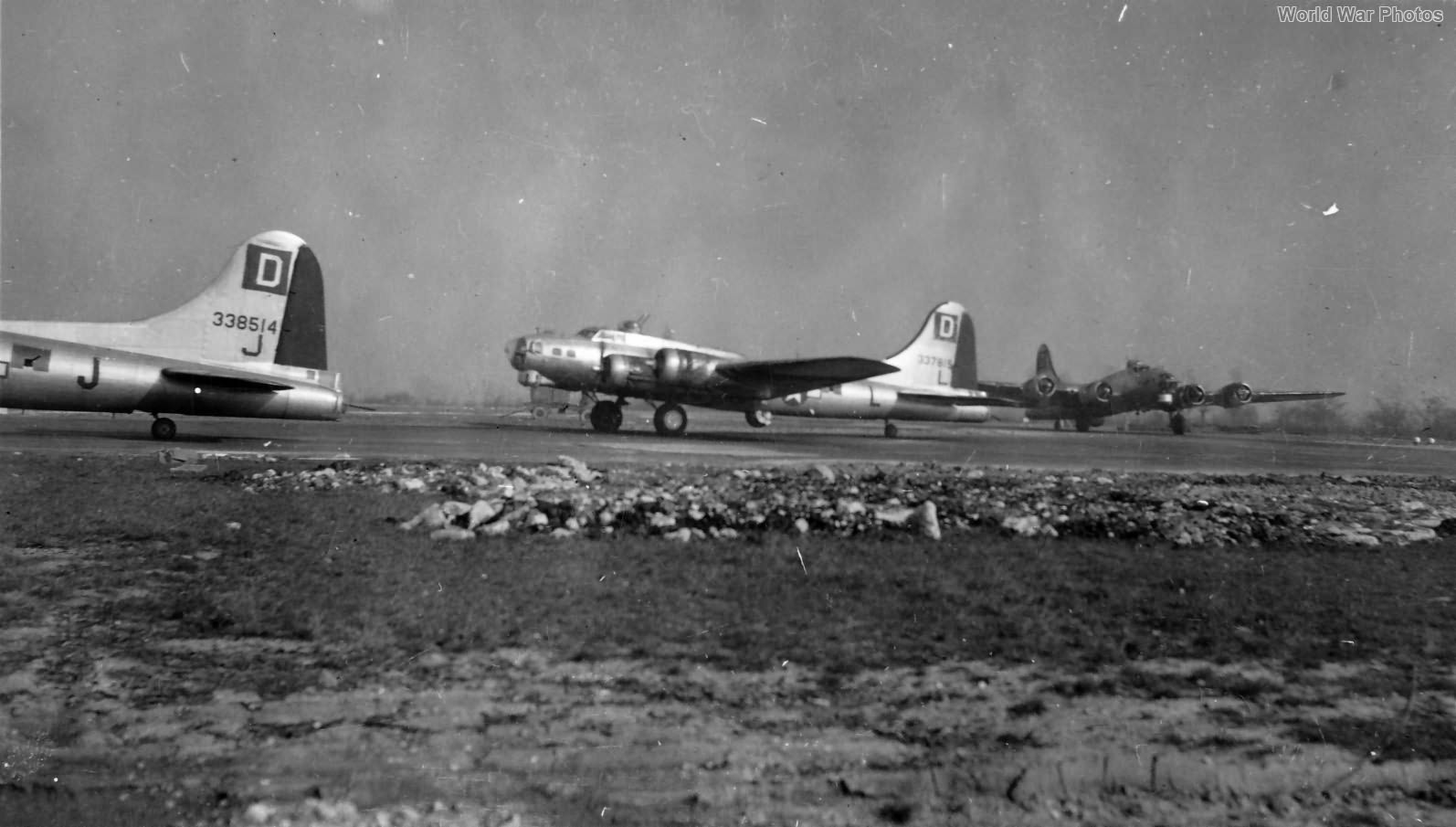The 100th Bomb Group (H), famously known as “The Bloody Hundredth,” was one of the most distinguished units in the Eighth Air Force during World War II, earning its nickname due to the heavy losses it sustained in combat. Here is a detailed summary of its service history:
Overview:
- Assigned to Eighth Air Force: June 1943.
- Combat Aircraft: B-17F (from blocks 80-BO, 40-DL); B-17G.
Wing & Command Assignments:
- 6 June 1943: VIII Bomber Command (BC), 4th Bomb Wing (BW), 402nd Provisional Combat Bomb Wing (PCBW).
- 13 September 1943: VIII BC, 3rd Bomb Division (BD), 13th Combat Bomb Wing (CBW).
- 8 January 1944: 3rd BD, 13th CBW.
- 1 January 1945: 3rd Air Division (AD), 13th CBW.
Component Squadrons:
- 349th Bombardment Squadron (H)
- 350th Bombardment Squadron (H)
- 351st Bombardment Squadron (H)
- 418th Bombardment Squadron (H)
Stations:
- 2 June 1943 – 8 June 1943: Podington (Ground echelon arrived on 3 June 1943).
- 9 June 1943 – 11 December 1945: Thorpe Abbotts.
Group Commanding Officers:
- Col. Howard M. Turner: c. 28 April 1943 – June 1943.
- Col. Harold Q. Huglin: June 1943 – c. 1 July 1943.
- Col. Neil B. Harding: 2 July 1943 – 28 March 1944.
- Col. Robert H. Kelly: 19 April 1944 – 28 April 1944 (MIA).
- Col. Thomas S. Jeffrey: 9 May 1944 – 1 February 1945.
- Col. Frederick J. Sutterlin: 2 February 1945 – 23 June 1945.
- Lt. Col. John B. Wallace: 23 June 1945 – late 1945.
- Lt. Col. John M. Bennett Jr. served as acting CO from 28 April 1944 – 9 May 1944.
Combat Record:
- First Mission: 25 June 1943.
- Last Mission: 20 April 1945.
- Total Missions: 306.
- Total Credit Sorties: 8,630.
- Total Bomb Tonnage: 19,257.1 tons (including 137.8 tons of supplies, etc.).
- Aircraft MIA: 177.
- Other Operational Losses: 52.
- Enemy Aircraft Claims: 261 destroyed, 101 probable, 139 damaged.
Major Awards:
- Two Distinguished Unit Citations:
- 17 August 1943: Regensburg (awarded to all 4th Bomb Wing groups).
- 4, 6 and 8 March 1944: Berlin.
Claims to Fame:
- Notable for heavy losses: The group suffered significant losses at various intervals throughout its combat operations, which contributed to its grim moniker, “The Bloody Hundredth.”
Early History:
- Activated: 1 June 1942 at Orlando Army Base, Florida. Initially slated to be a B-24 group, formation was delayed until late October 1942 at Gowan Field, Idaho.
- Training and Mobilization:
- Transferred to Walla Walla Army Air Base, Washington, around 1 November 1942, and received its first B-17s for training.
- Moved to Wendover Field, Utah, on 30 November 1942, and then to Sioux City Army Air Base, Iowa, on 28 December 1942.
- In late January 1943, relocated to Kearney Army Airfield, Nebraska.
- The ground echelon left Kearney for the port of embarkation on 2 May 1943, sailing on the Queen Elizabeth on 27 May 1943 and arriving in Greenock on 3 June 1943.
- The air echelon left Kearney on 1 May 1943 for advanced training at Wendover Field before taking the northern ferry route to the UK around 21 May 1943.
Subsequent History:
- Post-War Assignments: Initially scheduled for occupation duties in Germany, but plans were revised in September 1945. The group was assigned to the 1st Air Division on 12 August 1945, and later reassigned to the 3rd Air Division on 28 September 1945.
- Inactivation: Aircraft were flown back to the US or transferred to continental units between October and December 1945. Squadrons were inactivated, and remaining personnel sailed on the Lake Champlain on 12 December 1945, arriving in New York on 20 December 1945. The group was officially inactivated at Camp Kilmer, New Jersey, on 21 December 1945.
Aircraft Markings:
- B-17F/G Fortresses (June 1943 – November 1945):
- Factory Finish: B-17Fs were initially in Dark Olive Drab and Neutral Gray with SD110 code letters applied soon after arrival in the UK.
- Squadron Codes:
- 349th Bomb Squadron: XR.
- 350th Bomb Squadron: LN.
- 351st Bomb Squadron: EP.
- 418th Bomb Squadron: LD.
- These were painted in 36-inch high bluish-grey letters, with the squadron code forward of the cocarde on both sides of the fuselage and the individual call-letter aft.
- Markings: In late June and early July 1943, the “Square D” marking was painted on the fin (48-inch square) and upper surface of the right wing (66-inch square), in white with an Insignia Blue “D”. A 24-inch high call-letter was painted in yellow below the tail number.
- Variations: When bare metal-finished B-17Gs arrived in March 1944, markings remained generally consistent, though some variations in colors, sizes, and positioning occurred.
- Squadron Colors: In late 1944, propeller hubs were painted in squadron colors: royal blue for the 349th, yellow for the 350th, bright green for the 351st, and red for the 418th. In February 1945, a 12-inch wide stripe encircling the nose in squadron color was added just aft of the bombardier’s Plexiglas.
- High-Visibility Markings: In early February 1945, high-visibility 13th Combat Bomb Wing markings were applied. These included a 48-inch black band down the trailing edge of the fin and the rudder (later amended to the rudder only) and a 48-inch black band on the upper right and lower left wing surfaces, extending from the leading edge outboard of Nos. 1 and 4 engines to the trailing edges of the ailerons.
The 100th Bombardment Group remains one of the most legendary units of the Eighth Air Force, both for its resilience in the face of heavy losses and its contributions to the Allied bombing campaign in Europe.
